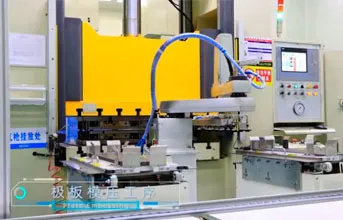The speed of a hydraulic press machine is directly related to the flow rate of the hydraulic fluid. Increasing the flow rate can enhance the speed of the press. This can be achieved by using pumps with higher flow capacities or by optimizing the hydraulic circuit to reduce resistance and allow fluid to flow more freely.

If you want to speed up the hydraulic press, you have to increase the flow rate. If the pressure remains unchanged after increasing the flow rate, the power of the hydraulic press motor will be larger than before. Generally, the motor needs to be replaced. Of course, if the motor design is large enough before, it does not need to be replaced. In the hydraulic system, if there is a throttling device to adjust the flow rate, if it is not affected by the throttling device of the hydraulic press, the pump group needs to be replaced. The hydraulic pump should be selected according to the work requirements. The working cylinder speed of the hydraulic press is relatively slow. If you want to increase the speed of the hydraulic press, you must carefully calculate it comprehensively.
Generally, hydraulic presses are relatively stable. As a general non-cutting forming processing equipment, it can operate stably and sustainably after high-frequency operation with structure and adaptability, and use liquid pressure to transmit energy to end various pressure processing. The working characteristics of the hydraulic press are flexible transmission, unlike the messy power transmission system of mechanical processing equipment. This driving principle avoids the situation of hydraulic press overload. In the stretching process of the hydraulic press, there is only a single linear driving force, and no angular driving force, which makes the processing system have a longer life and a high yield rate of workpieces.
The hydraulic press has three action methods: single action, double action, and triple action. In the single action method, the pressure head or slide plate is used as a moving part to move in one direction to complete the constraint process. This working method has no edge pressing equipment. The single action hydraulic press is suitable for coils and strip materials; the double action hydraulic press has two moving parts, the slide plate or punch and the template. The working process is that the punch or slide plate stretches the punch from top to bottom, and the template acts as a fixed pressure plate. After the constraint forming, the template can complete the function of punching and ejecting.


 +86-769-8306-1993
+86-769-8306-1993
 E-mail
E-mail
